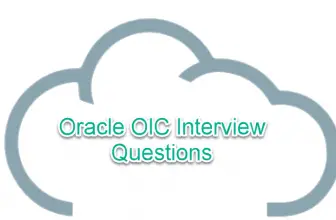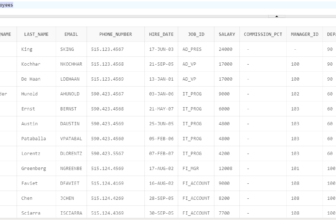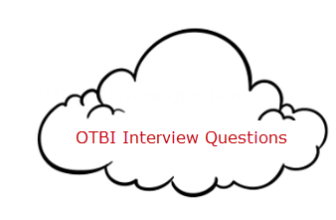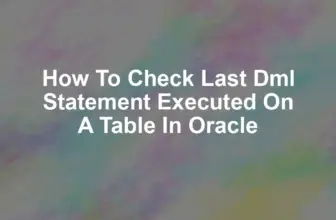Welcome ! If you are starting out in Oracle E-business Suite aka Oracle EBS there are lot of technical area you may need to cover. Even if you have gone through some training these Oracle Apps Technical Interview Questions will help you to get an understanding of what is expected from a apps technical resource in the IT industry.
Behest these set of questions will also help some of the experienced EBS Aps tech resources during giving interviews or taking interviews.
So lets get started !
Table of Contents
Oracle EBS Architecture
If you are experienced in the Oracle Ebusiness suite, be aware of the EBS technical architecture, it’s important.
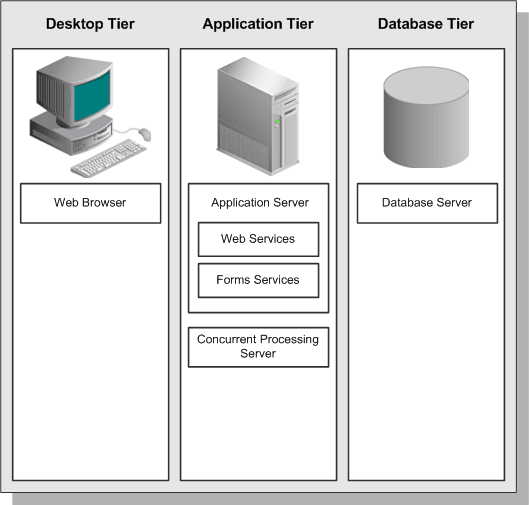
Main Topics for Oracle Apps Technical Interview Questions
The Main Topics for an apps technical resources to be aware of are
- Architecture
- Common Tables
- Common Flows (Atleast One)
- Flows with tables involved
- Interfaces and Interface tables
- Modifying Workflows
- Modifying Forms/ Reports
- integrations (SOA Gateway)
- BI Publisher
- Form Personalization and customization
- OAF Personalization
- OAF extensions
Questions on Oracle E-Business Suite (EBS)
-
What is the Job difference between an Apps Technical resource and an Apps Functional resource?
Apps technical resource does the customization while apps functional does the configuration of the application.
-
Which module you have worked in Oracle EBS?
Tell one or some of HRMS , Order Management, Financials, manufacturing etc.
-
What are RICEW components?
Reports, Interfaces, Conversions, Extensions, and Workflow
-
Can you explain the technical architecture of Oracle EBS?
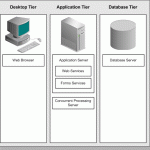
It’s a 3 tier architecture with Client as Desktop Tier,
Application tier where the application server, web services, forms services, and concurrent processing server runs.
And the Database Tier where the Master data and transactions are stored.Refer to Oracle documentation for more details
-
Can you explain the Technical Product Stack and technology components of EBS?
EBS Uses Oracle Forms and OAF (Oracle Application Framework) for UI
Oracle Workflow for Managing business processes workflow
Oracle PL SQL API for backend processing of data
Oracle Reports and XML Publisher aka BI publisher for Reports
JSP Pages for Some of the self-service modules
Java programs for some Thread based concurrent jobs
WebADIs for Excel-based uploads
Services are hosted on WebLogic and Database on Oracle Database 11g + -
How is security handled in EBS?
EBS Security architecture is based on RBAC (Role based access control) . It’s implemented via Responsibilities and security groups.
-
What are Flexfields?
Flexfields are configurable UI fields where extra information related to a custom process can be captured.
-
What is the difference between Key and Descriptive Flexfields?
Key Flexfields uniquely identify an entity object while DFFs store extra information about a transaction. Key flexfield are stored in SEGMENTs columns and DFFs in ATTRIBUTEs columns on a table.
-
Give an example of Key Flexfield and DFF
Key- Accounting Flexfield
DFF – Customer information, Invoice information -
How do you create a custom concurrent program?
First Create Executable > Create Concurrent program. Enter Details like unique short name >and attach Executable.
-
What is CUSTOM TOP?
The custom top is the Custom Folder in the Oracle apps file system which holds all the customized files and configurations. its recommended not to modify seeded standard files and reports. If any customization is needed create new custom files and upload to the custom top and reference it via the seeded or custom menu.
-
What is Multi-Org?
EBS provided the facility to serve branches of a business separated by orgs. The Data is stored in the same tables having a column for Org ID for every transaction.
-
How do you access data of a certain Org using an external SQL Client like TOAD etc?
We need to set the environment using fnd_global.apps_initialize
-
How do you access data from Views from SQL dev?
dbms_info.set_Client_info(org_id) is used to set the environment along with fnd_global.apps_initialize ((USER_ID,RESP_ID,APPL_ID);
mo_global.init(APP shortcode); -
What is a Request Group?
Request groups are buckets of menus with functions that can be added to responsibilities to provide access.
-
What is Template.Fmb?
It is used to create custom forms , it has all the components and libraries to create App Standard Forms.
-
What is Custom.PLL?
It is present $AU_TOP/resource directory used to call new apps forms
-
How do you create a custom report?
Once we create a report we can push to custom TOP and create executable pointing to the custom report.
Then we can create a custom concurrent program that calls the executable. The executable can be an Oracle Report or XML publisher Report. -
What is an _ALL table and _V objects?
ALL tables store data of all the orgs and _V objects are views that are populated at runtime based on the user login and org initialized. _V will show data of one org at one time.
-
Name some of the commonly used tables is the modules you have worked?
Purchasing – PO_HEADERS_ALL, PO_LINES_ALL,PO_LINE_LOCATIONS_ALL
OM – OE_ORDER_HEADERS_ALL, oe_order_lines_all, qp_list_headers
AP- AP_invoices_all ,AP_invoice_lines_all -
What is the use of Integrated SOA Gateway (ISG)?
ISG is used for exposing Rest and SOAP services of EBS for third party integrations
-
How do you call and concurrent program from SQL?
Package FND_REQUEST.SUBMIT_REQUEST is used to call conc programs.
the parameters are (APP Short code , EXECUTABLE NAME and PARAMETERS of conc program) -
How many parameters are there in a concurrent program?
A concurrent program can have 100 parameters as arguments. While calling from pl SQL via fnd_request we need to pass 100 parameters. Blank values are passed as nulls.
-
Where do attachments get stored?
in FND_Attachments table
-
What are triggers in Forms?
Triggers are events on which code inside it get executed to do a certain function.
-
What is the difference between Block and form level triggers?
Some triggers are at Form , Block and Item level. The order of firing is Form Block then Item.
-
What is the difference between a Pre Query trigger and Post query trigger?
Pre query fires for one time before the block is queried. While Post query fires for each record.
-
What is the advantage of XMLP reports over Oracle Reports?
XML Publisher is easier to design than oracle reports. XMLP has data, template, and processing logic separated. Even business users can design layouts.
check more questions on XML publisher here. -
How do you modify a seeded workflow ?
Using Oracle workflow builder. We need to download the WFT file do changes and upload it with a new name then modify the original calling program to point to new custom workflow.
-
What is VO Substitution in OAF? How to do?
VO Substitution is used for substituting a standard view object on OA page with a custom view. For e.g the custom view may have more columns and additional data.
-
What command do you use to list customization of a OAF page?
jdr_utils.list_customizations
-
What are WebADIs? How do you make custom integrators?
Web ADIs are used to provide UI base uploading features from excel. Custom integrators can be defined using DESKTOP INTEGRATION MANAGER responsibility and can be used to call custom pl SQL packages to upload transactions like invoices etc.
Mapping of data has to be done from integrator to pl SQL package. -
What are the different Report triggers?
There are five different kinds of report triggers.
Before report
After report
Before parameter form
After parameter form
Between pages -
What is the firing sequence of the report triggers?
The order sequence related to firing is as follows
Before parameter form
After parameter form
Before the report
Between pages
After report. -
What are the mandatory parameters in a Concurrent Program?
Errbuff and Retcode. Both are Varchar2 Type
-
What are inbound and outbound interfaces?
The inbound interface is used to feed data to EBS whereas the outbound interface is used to extract data from EBS and feed 3rd party applications.
-
What is the difference between REST API and SOAP API used in ISG module?
Some objects provide REST, SOAP, and PL SQL interfaces exposed as web services. Check Rest VS SOAP here
-
What are to migration options for EBS to Cloud?
The hybrid cloud model can be used to migrate the EBS process to Oracle SaaS in a phased manner.
-
How will you design an FBDI file which can be consumed by the Oracle SaaS Application?
First, get the file format. it is in form of xlsm but when generating it creates csv in zip.
We can use PL SQL or BIP report to extract the data in the same format and send to fusion. -
What are Value Sets? where are they stored?
Value set provides LOV data to fields with list of values attached. The value are stored in FND_FLEX_VALUES and FND_FLEX_VALUE_SETS table.
-
How to you create table type validation in Value Sets?
Set type equal table and in validation logic give the query fields of table
-
What are dependent value sets?
When one LOV field is dependent of another LOV field we need to create a dependent value set.
-
Where do you use $flex$?
To refer to parent value set in child value set to create dependent value sets.
-
What is the difference between the Staging and Interface table?
Staging data is raw data that is converted after validation and pushed to interface tables. The standard conc programs can read data from interface tables.
-
What are Sub Functions?
Subfunctions can be used to control security on a form or page. for eg disabling a create button on an Invoice page etc.
-
What are the different types of validations in value sets?
They are
None: No Validation
Independent: Validates from LOV
Dependent: based on parent value set.
Table: Validates from application table.
Special: These are the values that use of flex field values.
Pair: A pair can be defined as the set of values that make use of flex fields.
Translated Independent: This is a kind of value that can be made used only if there is any existence for the input in the list that is defined previously.
Translatable dependent: In this kind of validation rules compare the input with the subset of values associated with the previously defined list. -
Explain a Techno functional flow that you are aware of?
Explain Procure to Pay or Order to Cash or Hire to Retire, RFQ to Order any one with tables involved.
-
What are Business Events in Workflow?
Business Events are events that gets raised on a transaction. There are standard events in form of e.g oracle.apps.ap.event.invoice_approval. Actions can be subscribed for events in the Oracle Workflow administrator screen.
-
How do you subscribe to Business Events?
Go to the Business Events tab in oracle workflow administrator responsibility. Query the business event and hit subscriptions.
-
How do you create a custom Business Event?
Go to the Business Events tab in oracle workflow administrator responsibility. Hit Create Event Button and enter details like Name, Status, Owner name , Owner tag, then add action. Action type can be of launching workflow etc.
-
How Can you trigger an Event from PL SQL?
Events can be programmatically raised through the ‘wf_event.raise’ API. Example wf_event.raise(‘wps.apps.ap.supplier.header.create’,:new.vendor_id || ‘:’ ||
match_date); -
What attributes are mandatory to create a Event-based Workflow?
Events require that three attributes be defined,
Event Name: To store the event name,
Event Key: To store the event key and
Event Date: To store the event message.
The first two must have a type of ‘Text’, and the event data must have a type of ‘Event’ -
Which table does the Event data get populated?
There are WF_ tables like WF_EVENTS, WF_DEFERRED , WF_CONTROL to mange and see data.
-
What are cursor attributes in PL SQL?
Cursor attributes are used to fetch the records and keep their handle. %FOUND %NOT_FOUND.
Check out more PL SQL questions here. -
What is the difference between process request and process form request in OAF?
Process Request method executes when loading the page and Process form request in the processing of form data of page (POST).
-
Explain the OAF Page architecture.
OAF page architecture is based on MVC model . MVC is model view controller. View holds the data Controller handles and processes the data
-
What is EO , VO and AM used for in OAF?
EO is entity object which interacts with database, VO is view object which interacts with EO and AM is application module is the container for all BC4J components.
-
Have you integrated EBS with any other ERP product? If yes explain one of the integration patterns?
EBS Integration can be done via different methods like using
Webservices
PL SQL interfaces
Custom logic exposed as web services
Workflow modifications with Business Events.
Using EBS Adapter with SOA, OIC, or any middleware.Explain any of the scenarios you used including the above.
Final Words: Oracle Apps technical Interview questions can be very scenario-oriented. A candidate should have a basic idea of technical architecture and where to look for what. This will keep you in good stead in the world of Oracle Apps Technical Roles. Good Luck!
Do check out Oracle Fusion Apps interview questions
More on Oracle Apps Tech



